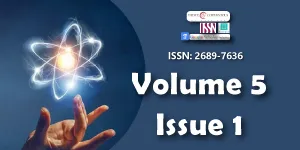On the shape and fate of our Universe
Main Article Content
Abstract
Einstein’s special and general theories of relativity revolutionized physics and cosmology. Newton assumed four identities namely mass, energy, space, and time. He told that space is absolute. Einstein modified and refined Newtonian concepts s by postulating that mass-energy and space-time. This enabled Einstein to find special relativity theory which predicted the variance of mass with velocity, the equivalent of mass and energy, time dilation, and length contraction. The extension and generalization of special relativity theory is the outcome of general relativity theory which is the geometrical interpretation of gravity. Almost all the predictions of Einstein’s general relativity theory have been experimentally verified. By delving into the equations of general relativity, the famous Russian mathematician Alexander Freedman found that the geometry of our Universe has only three possibilities, namely, open, closed, and flat. Freedman’s publication in the 1920s paved the way to study the geometry and fate of our Universe. Recently, NASA’s WMAP spacecraft and ESA’s Planck probes and observations revealed that the geometry of our Universe is flat with a marginal error of 0.04%. But to this day, there is no mathematical proof for these observations. In this short work, by applying the multiplication and division laws of number theory to cosmic triangles the author attempts to show that the shape/geometry of our Universe is FLAT.
Downloads
Article Details
Copyright (c) 2022 Kalimuthu S.

This work is licensed under a Creative Commons Attribution 4.0 International License.
Licensing and protecting the author rights is the central aim and core of the publishing business. Peertechz dedicates itself in making it easier for people to share and build upon the work of others while maintaining consistency with the rules of copyright. Peertechz licensing terms are formulated to facilitate reuse of the manuscripts published in journals to take maximum advantage of Open Access publication and for the purpose of disseminating knowledge.
We support 'libre' open access, which defines Open Access in true terms as free of charge online access along with usage rights. The usage rights are granted through the use of specific Creative Commons license.
Peertechz accomplice with- [CC BY 4.0]
Explanation
'CC' stands for Creative Commons license. 'BY' symbolizes that users have provided attribution to the creator that the published manuscripts can be used or shared. This license allows for redistribution, commercial and non-commercial, as long as it is passed along unchanged and in whole, with credit to the author.
Please take in notification that Creative Commons user licenses are non-revocable. We recommend authors to check if their funding body requires a specific license.
With this license, the authors are allowed that after publishing with Peertechz, they can share their research by posting a free draft copy of their article to any repository or website.
'CC BY' license observance:
|
License Name |
Permission to read and download |
Permission to display in a repository |
Permission to translate |
Commercial uses of manuscript |
|
CC BY 4.0 |
Yes |
Yes |
Yes |
Yes |
The authors please note that Creative Commons license is focused on making creative works available for discovery and reuse. Creative Commons licenses provide an alternative to standard copyrights, allowing authors to specify ways that their works can be used without having to grant permission for each individual request. Others who want to reserve all of their rights under copyright law should not use CC licenses.
Link: https://bit.ly/3wCrxyq
Link: https://bit.ly/37QhF9X
Link: https://bit.ly/3JAq8Mz
Link: https://bit.ly/3JBzsQr
Link: https://bit.ly/3NhHCj2
(2021) Academia Arena. 13. Link: https://bit.ly/3Iugdqw
S Kalimuthu (2020) On freedman equation and the shape of our universe. Ann Math Phys 30-31. Link: https://bit.ly/36HIs7I
S Kalimuthu (2021) On Friedman equation, quadratic laws and the geometry of our universe. Int J Phys Res Appl 48-50. Link: https://bit.ly/3IAAjze

